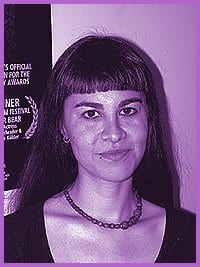I have always believed that the equal right to marriage for lesbians and gays is the cornerstone to garnering equal rights in a wider sense. Beliefs are one thing, but witnessing them is completely different. I attended my first lesbian wedding just recently, which drove home the ineluctable importance of the equal right to marriage.
By all accounts, it was a traditional ceremony, except for the fact that it was two women who were being united in marriage, not a man and a woman. The event was, frankly, remarkable. It wasn’t the lovely bouquets of mauve-coloured roses, the two women in their beautiful dresses ornately decorated with white lace or the delightful meal we dined upon that made an impression upon me. Rather, it was during the signing of the guest book, when there was a line-up of half a dozen of their relatives and friends behind me, that I took pause. There was a photograph of the newly-married couple alongside the guest book, coupled with old black and white photographs of each of their parents walking down the aisle. Their parents were married 40 years ago and are still living their lives together decades later.
What struck me was the continuum being perpetuated through this marriage, and the fact that both sides of their families perceived the ceremony as carrying their family line into the future. The fact that it was two women getting married seemed irrelevant, and nobody appeared to notice that it was a “same-sex” marriage. It was a family gathering of roughly 100 people with nieces and nephews, parents, older aunts and uncles in their 70s and 80s, and childhood friends who attended the celebration with their spouses, children and their own parents as well.
Throughout the day, I couldn’t escape the feeling that I was witnessing a historical milestone. Other people who attended the wedding also echoed this sentiment. More than a ceremony that involved a private statement of love, this marriage was a public commitment, and one made firmly in the realm of a large family proud and pleased by the new partnership between their daughters.
The nature of marriage is implicit with acknowledgements and public presentation unforeseen in any other ceremony during adult life. There are very few, if any, ceremonies that require making such a declaration. At its root, marriage is the validation and affirmation of a relationship for others to approve of. It is precisely this public aspect of marriage that will make sexual orientation less relevant in a social and personal sense as time goes by.
Twenty years from now, the difficulties for people coming out of the closet will be far less trying than they are today – in the same way that coming out can be easier today than it was in the ’80s. With the advent of equal marriage, the so-called closet is rapidly shrinking. One day, the entire concept of coming out will be irrelevant. I wouldn’t be at all surprised if in 200 years, the phraseology is eliminated from the English language altogether. In the same way that society no longer complains about couples of different races forming a family, soon we will no longer occupy ourselves with couples of the same sex doing so.
The crux of it all is public acknowledgement. It is something that gays and lesbians have never had until now. For generation after generation, we have had to shelve our relationships and conceal them behind closed doors. With all facets of Canadian society now having to acknowledge same-sex unions, it is especially sweet considering many of us have lived with the opposite. And with public acknowledgement comes public acceptance.
The marriage I attended was one that lay ultimate importance on kinship. In many ways, its purpose relates to the reasons many people choose to marry – to legalize their children’s relationship to both of them equally. The newlyweds see marriage as legitimizing their family, which will be composed of two women and at least two adopted children within a few years.
Just a decade ago, people spoke of the gay or lesbian lifestyle. Now so-called lifestyle is not differentiated by sexuality. The gap has closed. Rather than being marginalized, we are being embraced by the communities in which we live. This couple lives in suburban Ottawa in a beautiful house across from a small park that is a year-round utopia for children. Theirs is the model of a young family that a large number of Canadians aspire to and idealize.
With the option for lesbian and gay couples to partake in the institution of marriage comes a more stable society. By widening the definition of family, multiplicity is engendered in a country that is already composed of diverse communities. Already, the word family has a plethora of meanings from one or more parents and their children to two or more people who share goals, values and long-term commitments to members of a household who reside under one roof to a close group of friends to loyal pets. For those lesbians and gays who have families now and who are choosing to have families in the future, difficulties will arise from balancing work and life, rather than matters relating to equal rights.
Although we may find it difficult to look upon these times objectively, it’s important that we think of the history we are making, so we’ll eventually be able to tell these stories to our children and our grandchildren.

 Why you can trust Xtra
Why you can trust Xtra


